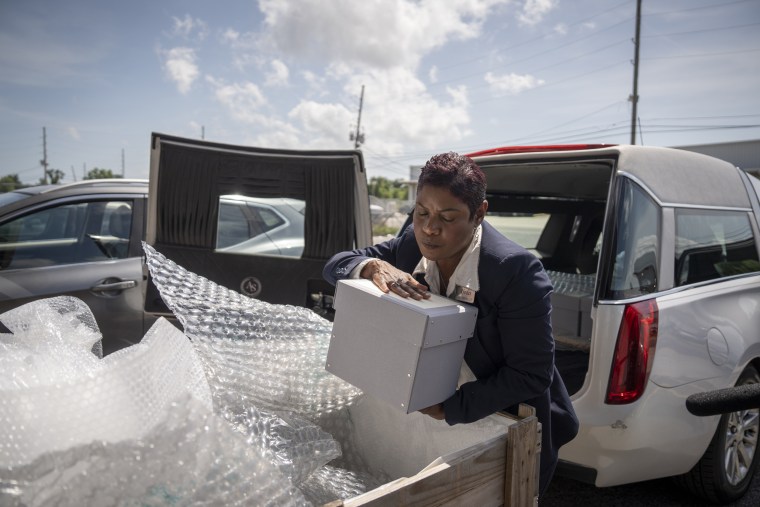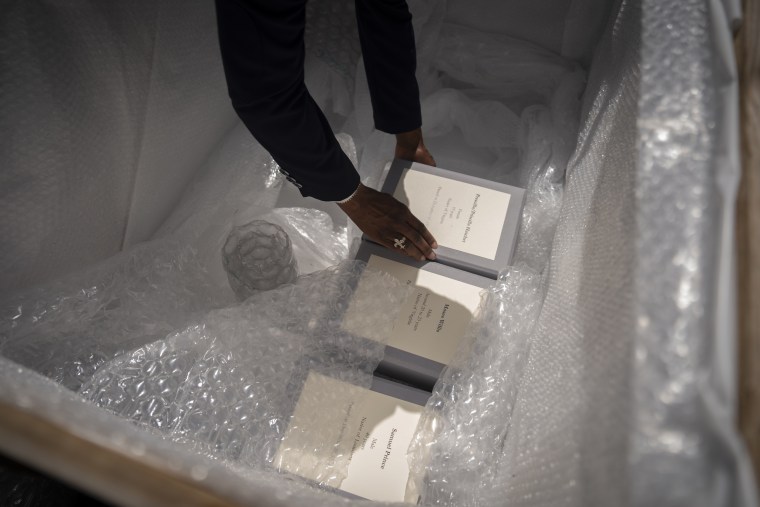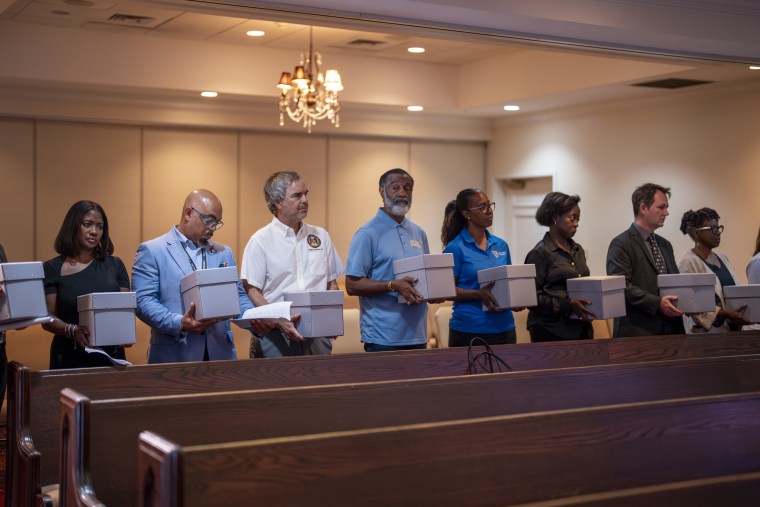More than 150 years after the rupture of their heads of their bodies and sent to Germany for “research”, the skulls of 19 blacks, which were recently returned, will be memorized on Saturday during a sacred ceremony in New Orleans.
The president of the University of Dillard, Monique Guillory, said at a press conference on Wednesday that the Memorial will consist of “facing a dark chapter of medical and scientific history while choosing a path of justice, honor and memory”.
Those who will be honored died at the city’s charity hospital in 1872. Their heads were cut and sent to the University of Leipzig in Germany to be studied – a common practice at the time, as researchers sought to confirm their unfounded theory according to which the brains of blacks were smaller than those of other races, which makes them lower.
“They were stripped of their dignity,” said Guillory, on “a practice anchored in racism and exploitation. They were people with names. They were people with stories and stories. Some had families, mothers, fathers, girls, sons, human beings.” They were not specimens, she continued, “not figures”.

The heads were returned to New Orleans about a week ago after a two-year trip, said Eva Baham, Dillard retirement professor. Leipzig representatives contacted the city in 2023 about their existence in Germany, where the university houses a collection of skulls dating from the 1800s. The school is reputating or returning skulls to their original locations. This initial call sparked the creation of the cultural repatriation committee, led by Baham.
“We are not talking about them as if they were skeletal remains,” said Baham at the press conference. “We want to honor them by calling them the individuals they are.”

Dillard, one of the two historically black universities of New Orleans, with the University of Xavier de Louisiana, praised the opportunity to be part of “this very sensitive recognition of our people, which they are here,” Guillory told NBC News. A visit will take place on Saturday at the commemorative chapel without Dillard’s right with a service. The remains of Adam Grant, Isaak Bell, Hiram Smith, William Pierson, Henry Williams, Henry Williams, John Brown, Mahala, William Roberts, John Tolman, Henry Allen, Moses Williis, Mahala, Samuel Prince, John Tolman, Henry Allen, Moses Willis, Mahala Prince.
The other two people could not be identified.
The committee tried in vain for two years to contact the descendants of the victims but was not successful. They learned certain information, said Baham, and found their names listed in the files of municipal death almost successively.
“In these files, lists what they died, how long they were in New Orleans,” she said. “We have people who were here in New Orleans by an hour in 1871, one day, a week, two months. And it’s very important. ”

Guillory said that the service will be an expression of respect for New Orleans.
“We will do it in the most sacred way that we know how in our beloved city, in a true way to New Orleans, with jazz funeral that shows the world that these people were counting,” she said. “We have a very different relationship with death here and a very different relationship with what we believe to be the Spirit and our ancestors. And now they’re at home. And so, this is particularly poignant for the inhabitants of New Orleans. ”

When the opportunity arose, there were questions from people in the university and local community, said Guillory, on the reasons why the involved parties would welcome their return. But the city, the University Medical Center New Orleans, the Dillard University and other entities have not flashed.
“There is a certain sensitivity to material, the macabre and dark nature of what we are talking about,” said Guillory. “There was also a lot of uncertainty about whether we could really bring them here. We have to bring them here? Who should be responsible for bringing them here? Why bring them back? And I think that the committee itself had been very confident and convinced that it was the right thing to do.”
The leftovers will be stored at the world’s worldwide Katrina.
“We want this day not only to remember but of calculation and renewal,” said Guillory, “and may we never forget them.”


